

In the past, there was no rice in Japan.
It is said that it was introduced to Japan around the end of the Jomon period.Rice was once said to have been
introduced during the Yayoi period, but in 1992, pottery with impressions of rice grains dated to the late Jomon
period was discovered at the Minamizote Ruins (Okayama Prefecture).
There are various theories, including one that it was introduced directly to Kyushu from the lower reaches of
the Yangtze River, and another that it entered Okinawa from southern China and traveled north through the Ryukyu
Islands to southern Kyushu. It is believed that rice was introduced to Japan through various routes.
The photo below is of rice called red rice.It is thought that rice was first introduced to Japan during the
Jomon period, and it is called red rice because most of the seeds of wild rice are reddish brown.Red rice is
said to have been cultivated in various regions until the Edo period when varieties were improved.It has a very
strong vitality and can grow robustly even in wasteland without using fertilizers or pesticides, so it is so
easy to grow that you can even grow it on your balcony as long as you have soil and water in a pot.It also has
high nutritional value such as polyphenols, protein, calcium, and magnesium, so instead of eating red rice
alone, you can enjoy it very deliciously by adding a little red rice to white rice.
You may also get a little taste of the Jomon period by eating red rice on its own, as shown below. Please try it
out if you like.
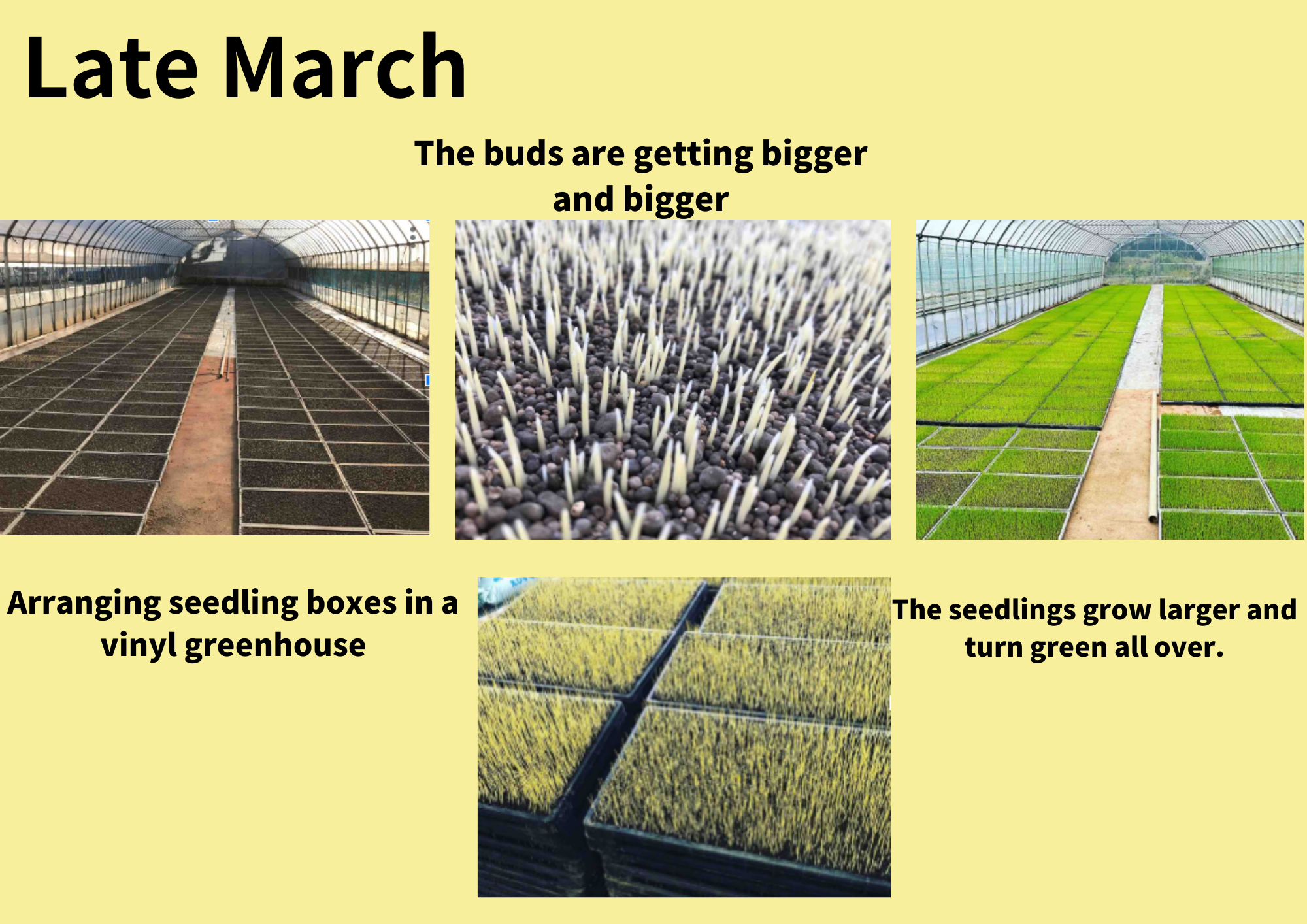
grow seedlings
Once the seeds have sprouted, the seeds are sown in a box called a seedling box with soil, and the
seedlings
begin to grow in a warm plastic greenhouse.Once the buds have grown to about 1cm, they should be moved
to a
plastic greenhouse, and the key is to gradually get used to the outside air by opening the plastic and
exposing it to sunlight from time to time while being careful about temperature control.
It seems that they are grown in a vinyl greenhouse until they reach a length of about 10 centimeters.
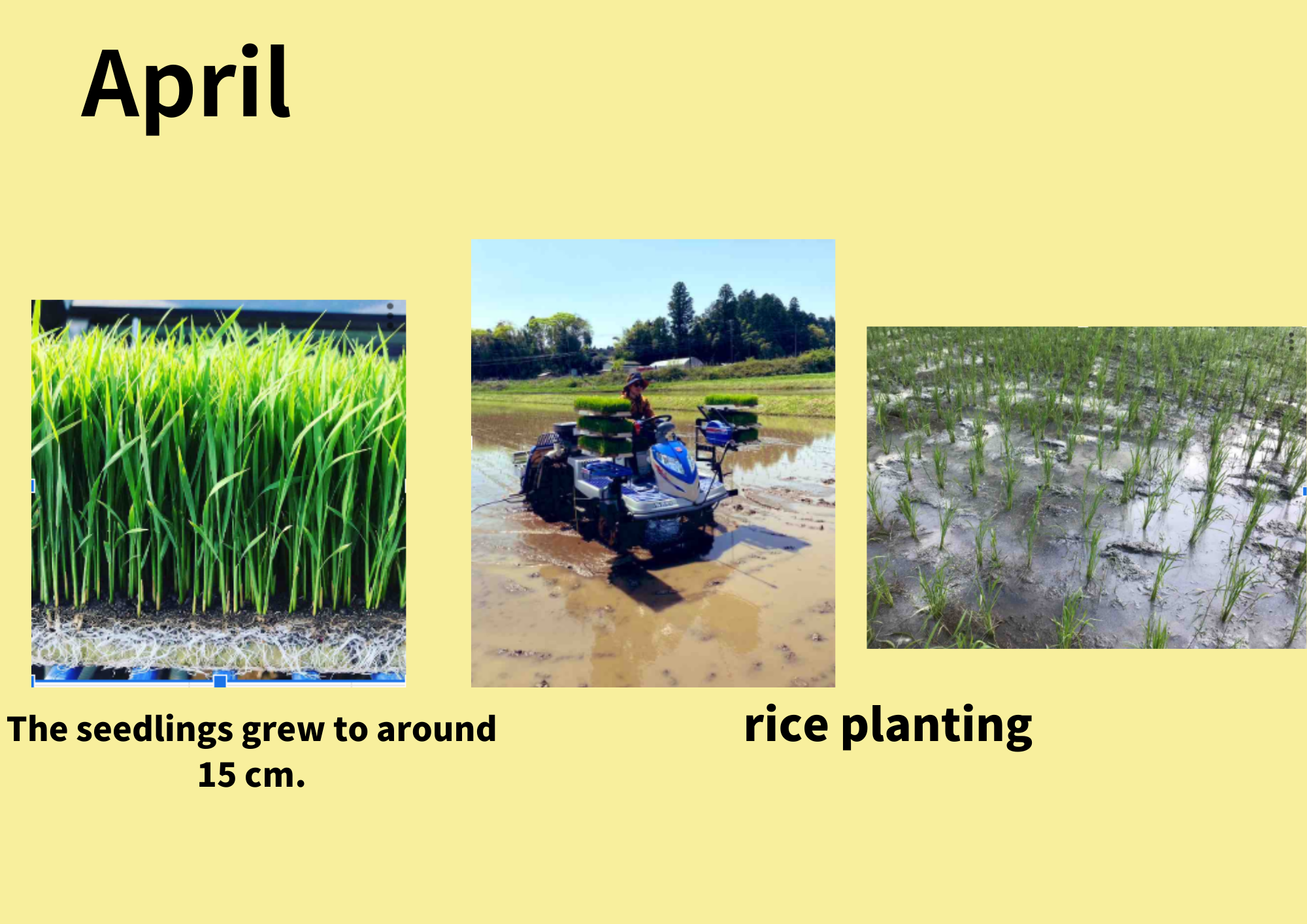
rice planting
About a month after sowing the seeds, the seedlings will grow to about 12 to 15 cm.
The work of transplanting these seedlings into rice fields is called rice planting.
In the past, ropes were stretched across rice fields and seedlings were planted along them.
Currently, many farmers use rice transplanters to plant seedlings.
When planting by hand, take 3 to 4 seedlings and hold them in a pinching motion.
The reason for planting 3 to 4 rice plants per plant is that each plant can produce 30 to 40 rice
plants.
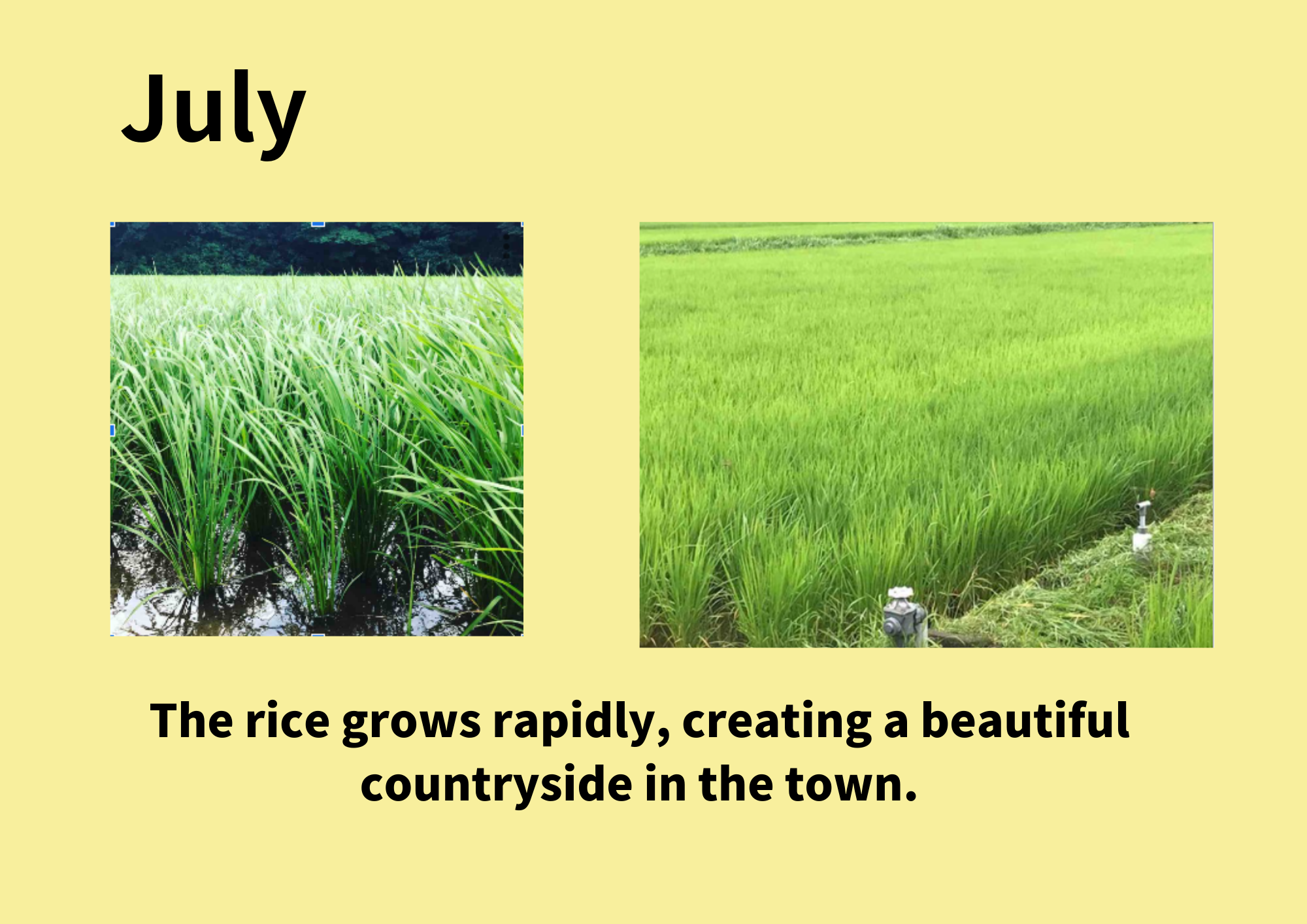
Rice field management
Because the rice is grown with reduced pesticides and reduced chemical fertilizers, it not only absorbs
minerals from the mountains and rivers, but also absorbs a lot of minerals through additional
fertilization
and grows quickly.
Weeding in the heat of summer is difficult, but I've heard that it's an important job in managing rice
fields.
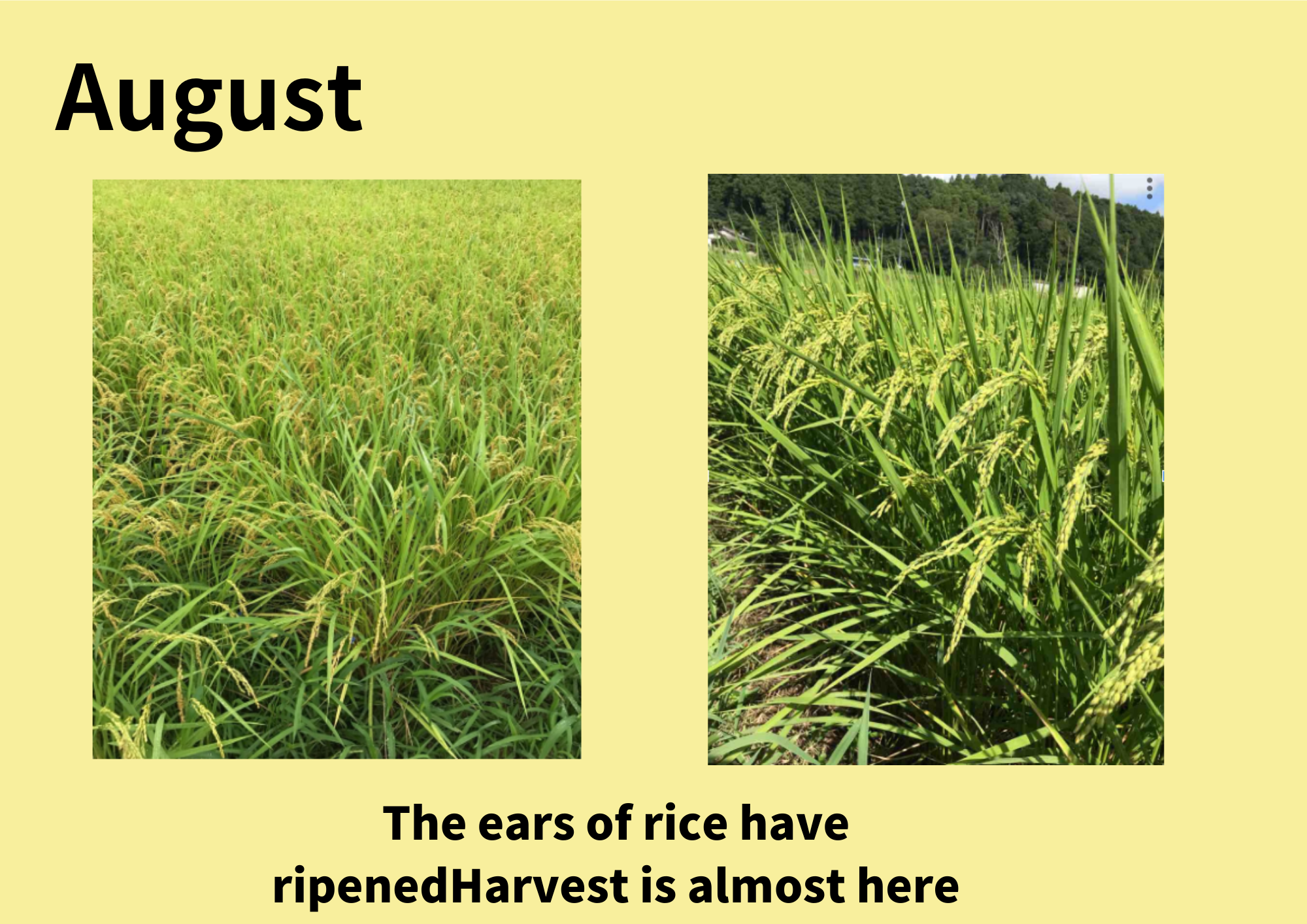
Just a little more until rice harvesting
The ears of rice have ripened and are gradually drooping due to the weight.
Before harvesting, we need to carefully manage the rice ears until they change color.
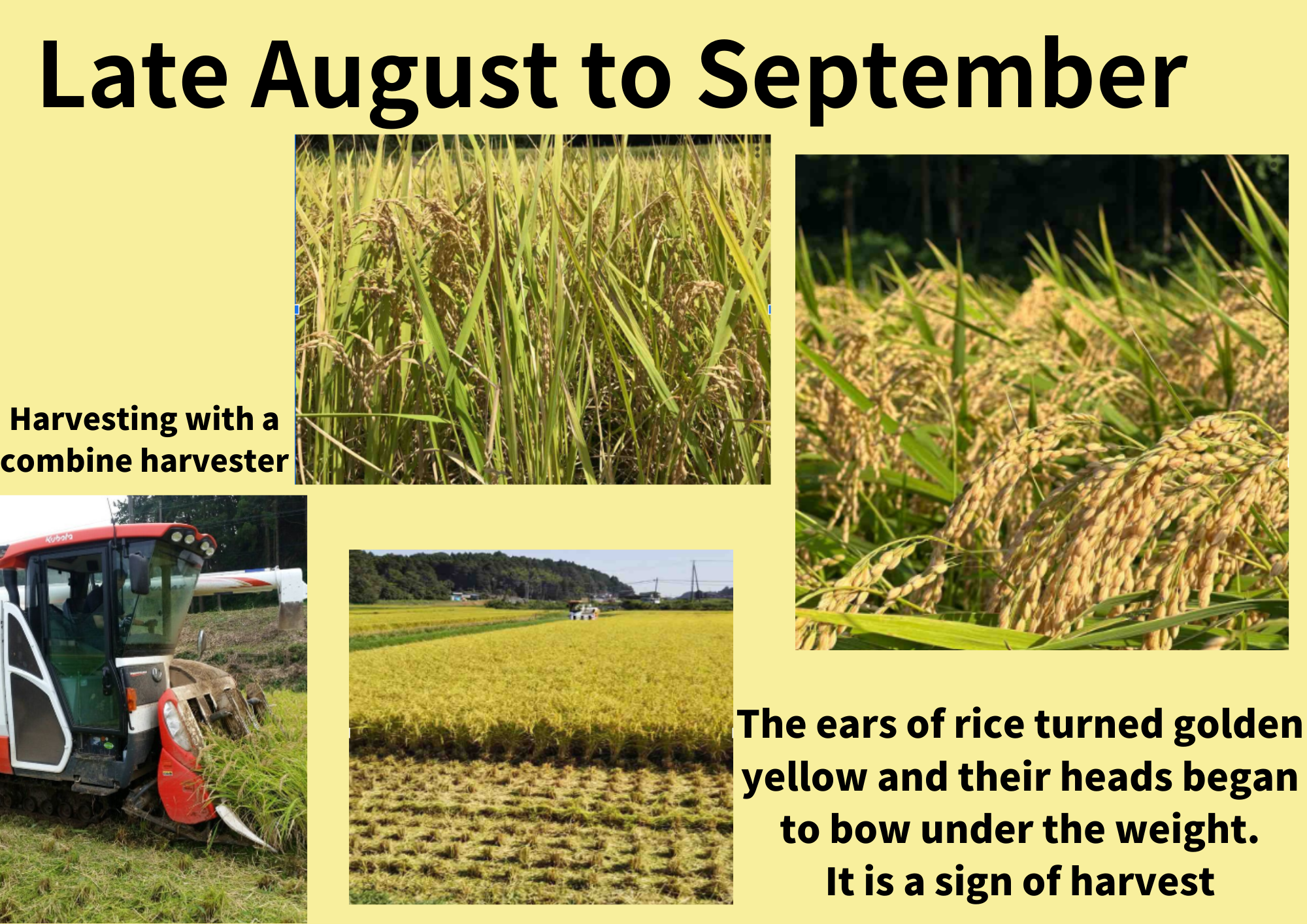
Harvesting rice
When the rice ears begin to droop, it is a sign of harvest.
Harvesting time takes place on sunny
days.
Water is removed from the rice field 5 to 10 days before harvesting.
Currently, it is common to harvest rice with a combine harvester,
but in the past, rice was
harvested with a
sickle.
After harvesting, the rice is slowly dried.
Thanks to Mr. Hagiwara of Takomai Life Hagiwara Farm LLC for his
cooperation.
Japan has grown by incorporating foreign cultures. Rice was also introduced from overseas.
However, in modern society, fewer people are eating rice, and the food that Japanese people eat is changing.
In order to revitalize the region, we want to make as many people aware of local vegetables and rice as
possible, and to have many people come from outside the prefecture and overseas to eat dishes made with
those
ingredients. We believe this is important in regional revitalization. That's why we have compiled the
history of
agriculture.
In order to encourage young people to take up farming, it is also necessary to improve
systems that allow them to rent equipment such as machinery and greenhouses, as well as financial aid systems.
We also felt that there was a need for more promotional activities to convey the appeal of agriculture through
social media, etc.I thought that it would be possible to revitalize agriculture if we could spread
information
about agriculture from each region in accordance with the times, so that people can experience agriculture up
close, such as through agricultural experiences and broadcasting of agricultural activities on
TV.